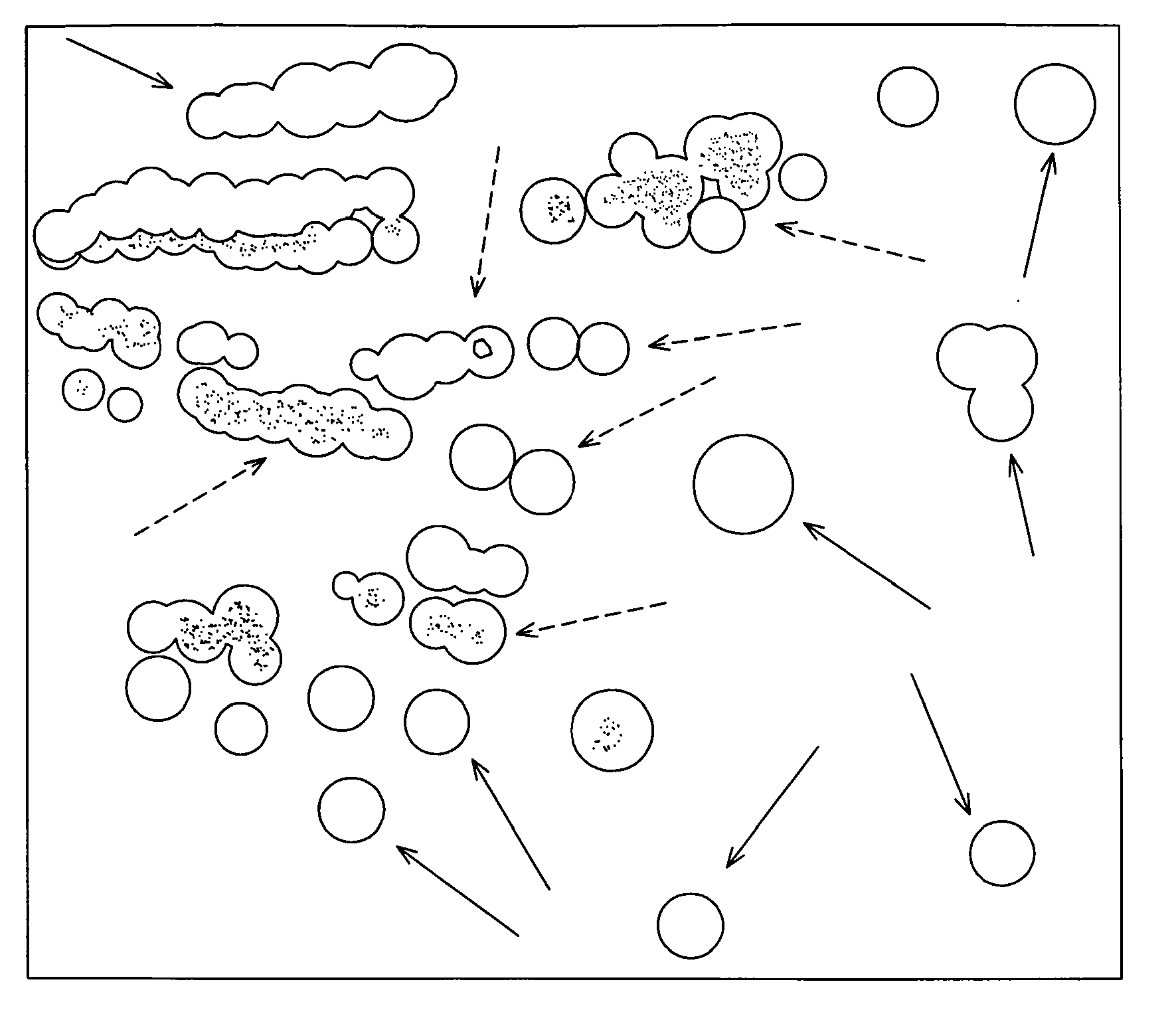Global transcription machinery engineering targeting the rnap alpha subunit (RPOA)
a technology of transcription machinery and rnap alpha subunit, applied in the field of global transcription machinery engineering, can solve problems such as changing the global transcription machinery in different ways, and achieve the effects of improving ethanol tolerance and productivity, improving industrial production of different target products, and improving phenotypes
- Summary
- Abstract
- Description
- Claims
- Application Information
AI Technical Summary
Benefits of technology
Problems solved by technology
Method used
Image
Examples
example 1
A) Translucent Colony Formation and Identification of HA-Producing Recombinant E. Coli
[0131]In light of the conventional method typically used to identify high-HA-producing strains of Streptococcus spp., and B. subtilis, by viscous colony morphology on solid medium (Kim et al., 1996; Widner et al., 2005), screening based on colony-morphology was also employed for identifying HA-producing cells in recombinant E. coli. As listed in Materials and Methods, six modified media denoted as M9M, RM, MOPSM, MM1M, LBMA and LBSMA, were tested for mucoid or other special colony morphology due to the secretion of HA. Results showed that both the HA-producing strain, Top10 / pMBAD-sseABC, and the non-HA producing strain, Top10 / pMBAD, could not grow well on M9M, RM and MOPSM solid media. Colonies of Top10 / pMBAD-sseABC appeared on MM1M plates after 3 days incubation at 37° C., but did not show any special morphological traits compared to Top10 / pMBAD. Similar results were observed for LBMA solid mediu...
example 2
A) High Throughput Screening of HA-rpoA, HA-rpoD and HA-rpoS Libraries
[0135]The above screen was applied to the identification of sigma factor mutants eliciting increased HA production in the previously engineered E. coli. Here, we also mutated the α subunit of the core RNA polymerase (RNAP) which has been shown to contribute to DNA recognition through interactions in sequences upstream of the canonical −35 promoter region (Ishihama, 1992; Busby and Ebright, 1994). The α subunit may interact directly with DNA or with activators or repressors of transcription, and thus helps modulating the relative mRNA abundance in the cell (Chen et al., 2003). Additionally, libraries of the σD factor (Alper and Stephanopoulos, 2007) which controls the expression of around 1,000 genes responsible for normal exponential growth (Gregory et al., 2005; Heimann and Chamberlin, 1988), and the σS factor that orchestrates the stationary phase phenotype in response to cessation of growth caused by various st...
example 3
RpoA Mutant Strains with Enhanced Capacities for L-Tyrosine Production
[0139]pHACm-rpoA plasmid libraries were transformed into E. coli K12 ΔpheA tyrR::PLtetO-1tyrAfbraroGfbrlacZ::PLtetO-1tyrAfbraroGfbr, a parental strain containing chromosomal overexpressions of two key genes in the aromatic amino acid biosynthetic pathway. Libraries on the order of 106 in size were screened with a melanin-based assay outlined in “Methods for Identifying Bacterial Strains that Produce L-tyrosine” (U.S. Provisional Application No. 60 / 965,149). From this search, two mutant strains—rpoA14 and rpoA27—were isolated which exhibited tyrosine production levels up to 96 and 112% above the parental strain, respectively (FIG. 7). FIG. 8 shows the concurrent change of pH (A) and the change of acetate production (B) in medium over time when the rpoA mutants strains rpoA14 and rpoA27 or the rpoA-wt parental strains were cultured for up to 48 hours.
PUM
| Property | Measurement | Unit |
|---|---|---|
| volume | aaaaa | aaaaa |
| volume | aaaaa | aaaaa |
| volume | aaaaa | aaaaa |
Abstract
Description
Claims
Application Information
 Login to View More
Login to View More - R&D
- Intellectual Property
- Life Sciences
- Materials
- Tech Scout
- Unparalleled Data Quality
- Higher Quality Content
- 60% Fewer Hallucinations
Browse by: Latest US Patents, China's latest patents, Technical Efficacy Thesaurus, Application Domain, Technology Topic, Popular Technical Reports.
© 2025 PatSnap. All rights reserved.Legal|Privacy policy|Modern Slavery Act Transparency Statement|Sitemap|About US| Contact US: help@patsnap.com



